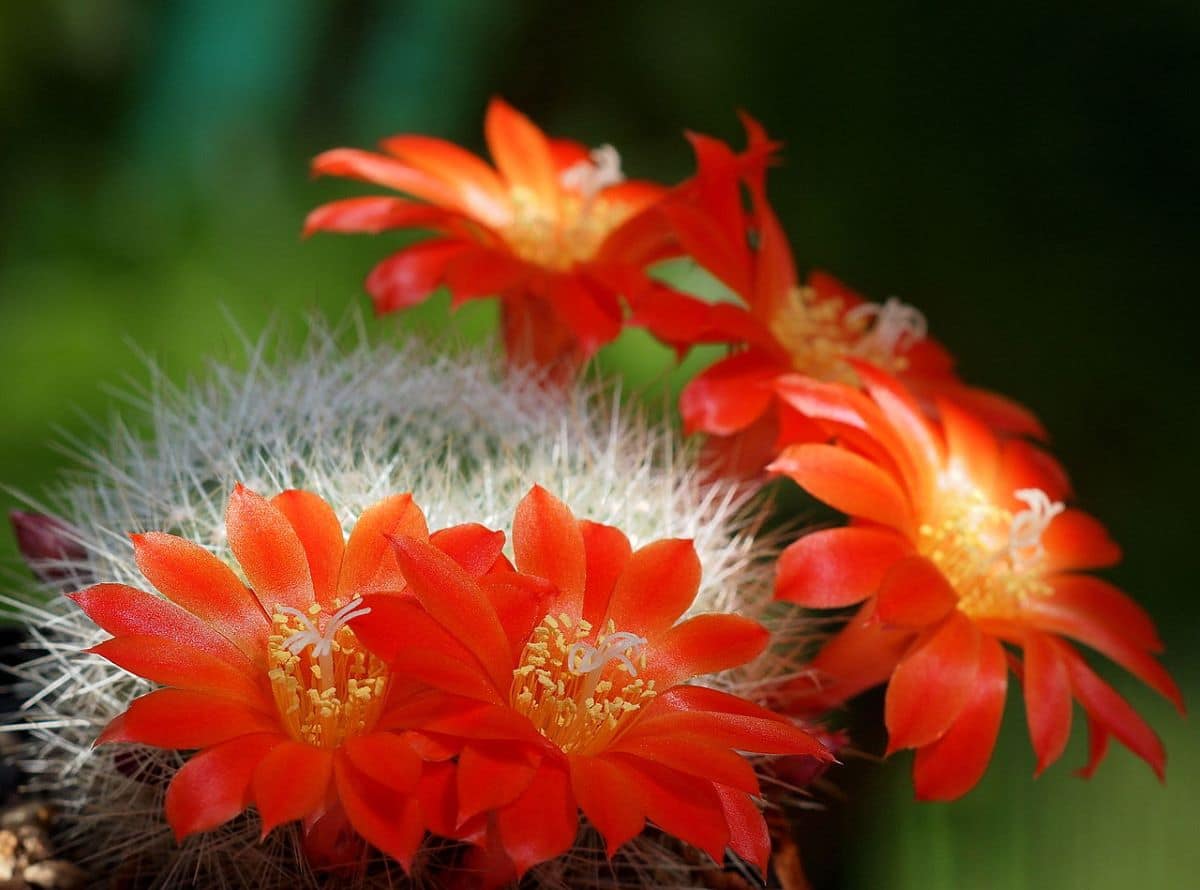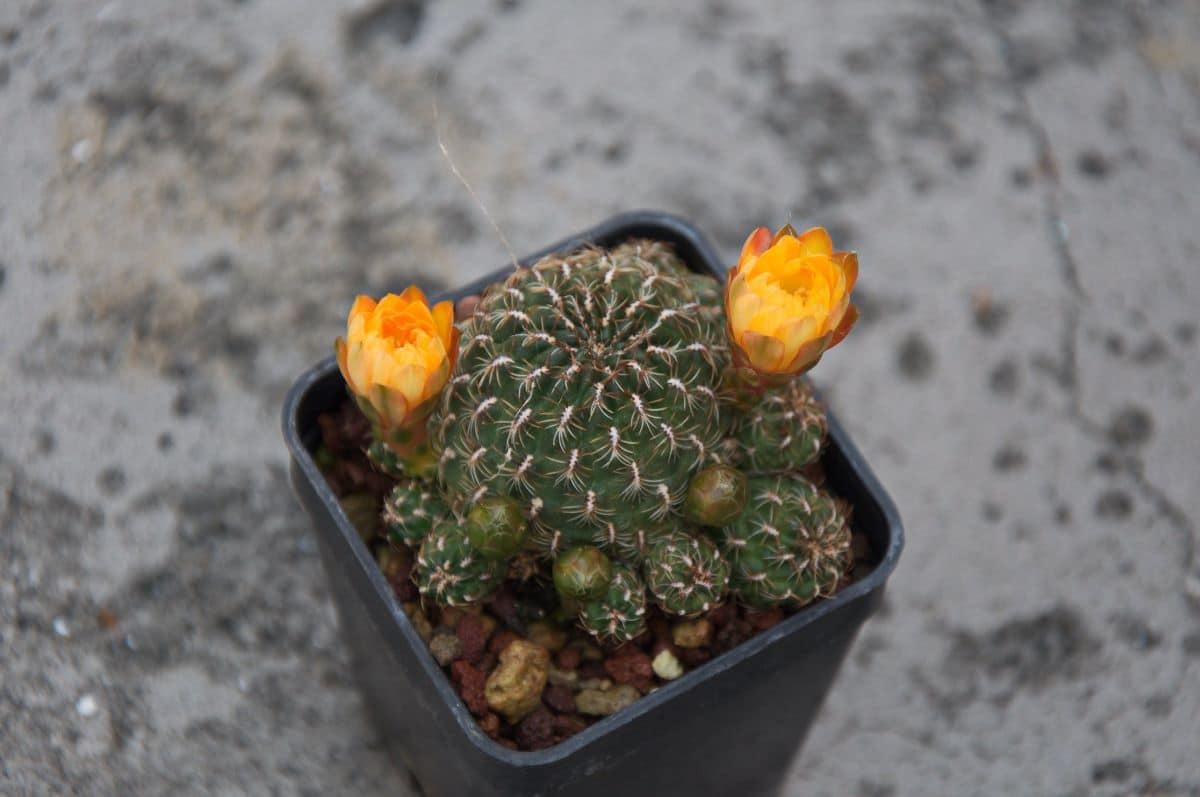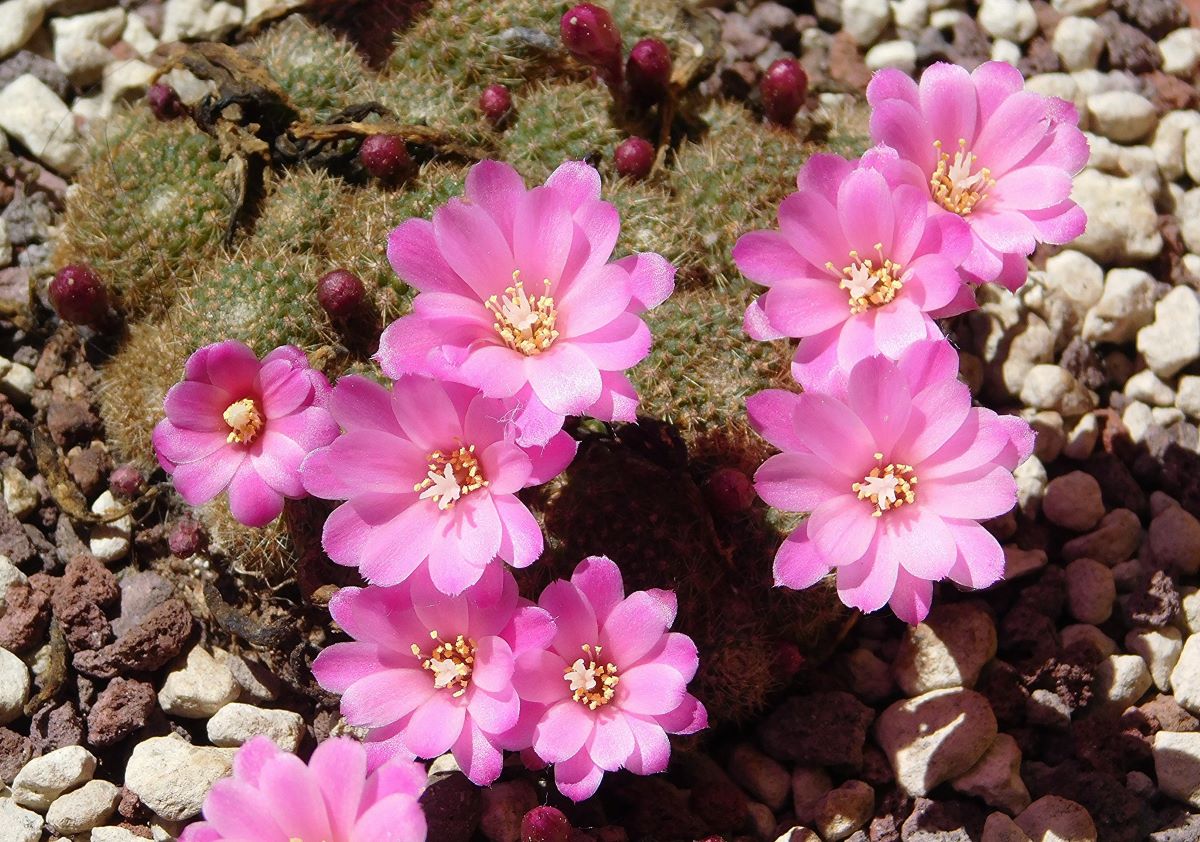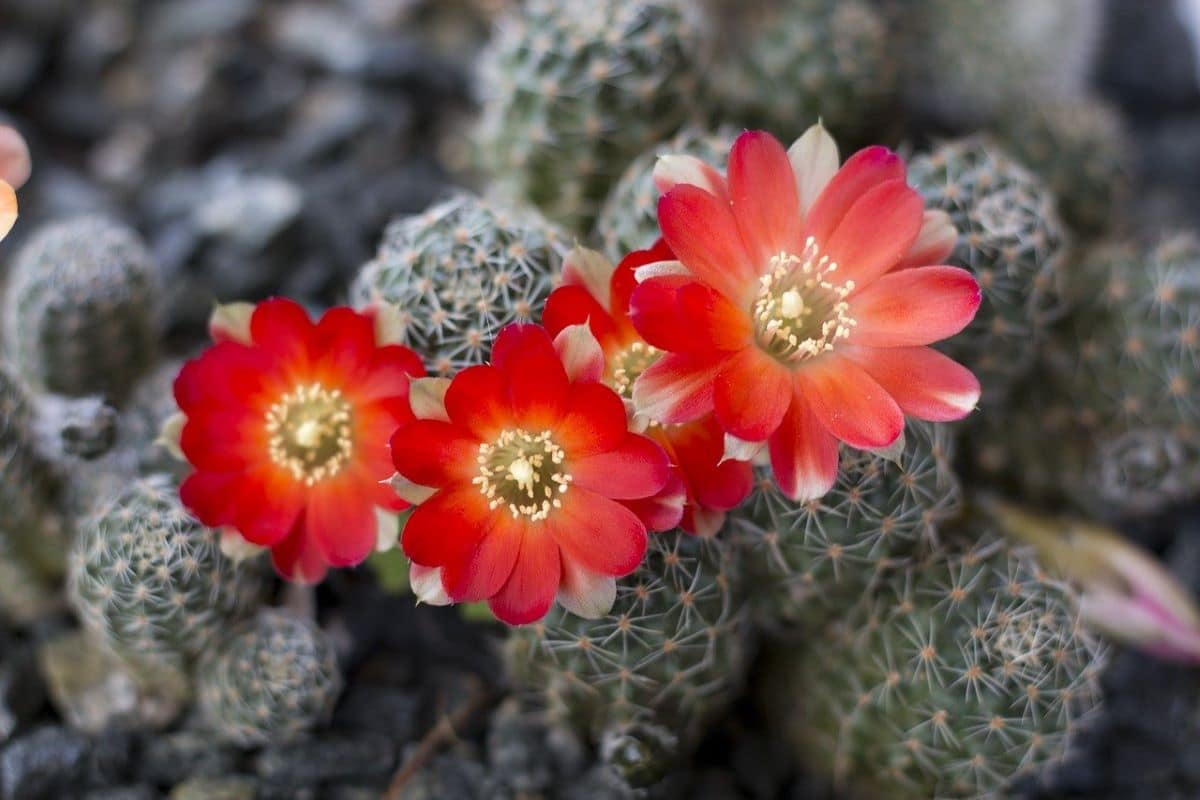
Image - Wikimedia / Dornenwolf
Cacti of the Rebutia genus are small, which is why they can be grown in pots throughout their lives, where they will also produce so many flowers that even their bodies could be hidden behind the petals.
And is that Although all cactus flowers are beautiful, those of the Rebutia are usually among the favorites, along with those of the Echinopsis and those of the Lobivia for example. Do you want to know what these cacti are like and what are they cared for? Let us begin.
Origin and characteristics of the Rebutia
It is a genus of cacti native to South America, where they live in Argentina, Peru and Bolivia. There are about 40 different species, and all of them are small plants, with globose bodies from which suckers sprout. Unlike other cacti, in them it is a bit difficult to distinguish the ribs, although the different tubers are appreciated.
The flowers sprout towards the middle of each stem, so that when they bloom they seem to have a crown. These are about 2-5 centimeters in diameter, and are generally yellow, red, or orange, but can be white in some varieties.
Main species
First of all, it is important that you know that many species that were previously in the Rebutia genus are now in the Sulcorebutia genus. Even so, since there are some Sulcorebutia that are still known by their old name, we have also included them. Get to know them:
Rebutia arenacea

Image - Flickr / Stefano
La Rebutia arenacea is an endemic cactus to Bolivia, which is now known as Sulcorebutia arenacea. It usually grows solitary, but sometimes suckers sprout from its body. It measures 5 centimeters in diameter by 10 centimeters high, and its flowers are yellow reaching 5 centimeters.
heliosa rebutia

Image - Wikimedia / Karelj
La heliosa rebutia it is also endemic to Bolivia. It grows in groups, which can exceed 20 centimeters in diameter. Its height is 10-15 centimeters, and produces orange, yellow or even purple flowers.
rebutia krainziana

Image - Wikimedia / Don Manfredo
Its current name is Rebutia marsoneri. It is endemic to Argentina, and it is a cactus that forms groups of about 7 centimeters high by about 20 centimeters in diameter. The flowers it has can be yellow or orange.
Minuscule rebutia

Image - Wikimedia /? ? HQ
La Minuscule rebutia it is, as its surname indicates, a small plant. In fact, it rarely exceeds 5 centimeters in height. It is endemic to Argentina, and grows in sparse groups. Its flowers are about 2-3 centimeters in diameter, and are pink, red or yellow.
rebutia perplexa

Image - Wikimedia / Resenter1
La rebutia perplexa It is a natural cactus from Bolivia. It forms very tight groups, so that at first glance they look like a sphere, which is about 15-20 centimeters high by up to 30 centimeters in diameter. Its flowers are pink.
Rebutia pymaea

Image - Wikimedia / Peter A. Mansfeld
La Rebutia pygmaea it is a species that grows in Argentina and Bolivia. It has to grow in groups, reaching a height of about 5 centimeters by about 3 centimeters thick. The flowers are red, yellow or orange.
What is the care of the Rebutia?
They are cacti that, in cultivation, need basic care in order to survive, especially when they are kept in pots. For this reason, now we are going to talk about everything we have to do to make them well:
Location
They must be kept in an area where there is a lot of light. It does not necessarily have to be direct sun all day, but it is advisable. However, they can be grown in semi-shade if you give them just a few hours directly.
But if in the nursery they had them protected from the sun's rays, it is important that, once at home, they are also placed in a protected area but with great clarity.
Earth
- Flower pot: black peat must be mixed with perlite (for sale here) in equal parts. In case you don't get it, a high-quality cactus substrate will do, such as this.
- Garden: the land must be sandy, with excellent drainage. As we are talking about small cacti, if the one we have is very compact, you can make a hole of about 50 x 50 and fill it with pumice, or cactus soil.
Irrigation
Irrigation will be rather scarce. You have to water once or twice a week in warm weather, and approximately every 15 days in winter.. If there are frosts in your area or it usually rains from time to time, do not water them unless you see the ground is very dry.
If you have them in pots, do not put a plate under your Rebutia because otherwise the roots could rot, unless said plate was drained each time it was watered.
Subscriber

Both in spring and summer it is highly recommended to pay them with a specific fertilizer for cacti. The instructions that can be read on the product label must be followed, because if not, nothing would be achieved (in fact, there would be the risk of taking a dose higher than the recommended one, and therefore the plants would have many problems, even dying).
Multiplication
The rebutias multiply by seeds and by division (separating the suckers) in spring or summer.
- Seeds: they should be sown in small pots, if possible wider than tall, with previously watered soil for cacti. Cover them with a thin layer of soil, and put them in semi-shade.
- Division: if your rebutia has suckers, you can separate them with a previously disinfected and dry knife, when they are about 2-3 centimeters in size. Then, infuse the foundation with rooting hormones (on sale here) and plant them in pots with cactus soil or vermiculite (for sale here).
Plagues and diseases
It is sensitive to excess watering and humidity, which rots them. For this reason, it is important to let the soil dry between waterings. In addition, if you live in an area where the humidity is high, the ideal is to have them in a pot with a pumice, a substrate that will allow the roots to receive the air they need to stay alive.
Also, in summer they can also have mealybugs, but being small plants they are quickly removed with water and a small brush for example.
Rusticity
They withstand the cold, and weak frosts (up to -2ºC), but only if they are punctual. Still, the best thing is that if it drops below 0 degrees they protect themselves in a greenhouse.

What did you think of the Rebutia?